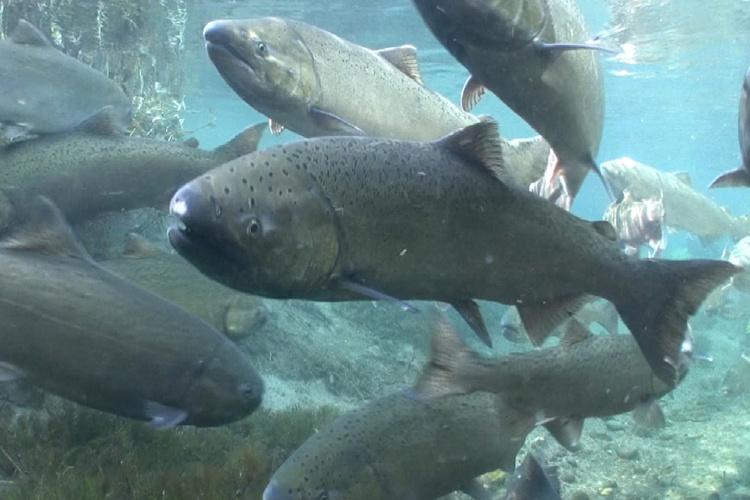|
Sponsored by |
|---|
|
|
|
-
Need help navigating the forum? Find out how to use our features here.
-
Did you know we have lots of smilies for you to use?
You are using an out of date browser. It may not display this or other websites correctly.
You should upgrade or use an alternative browser.
You should upgrade or use an alternative browser.
Lunacy I didn't know that!
- Thread starter CarolKing
- Start date
The Jordanaires can be heard on at least one Grammy-winning recording every decade from the awards' inception through the mid-2000s. The first was in 1959 and the last was in 2007.

You know that photo of the construction workers having lunch on the unfinished Empire State Building in 1932?
Here's the photographer Charles Ebbets taking that photo

Here's the photographer Charles Ebbets taking that photo
Tincandtoke
Well-Known Member
bulllee
Well-Known Member
LOLOL I remember this as a kid.....
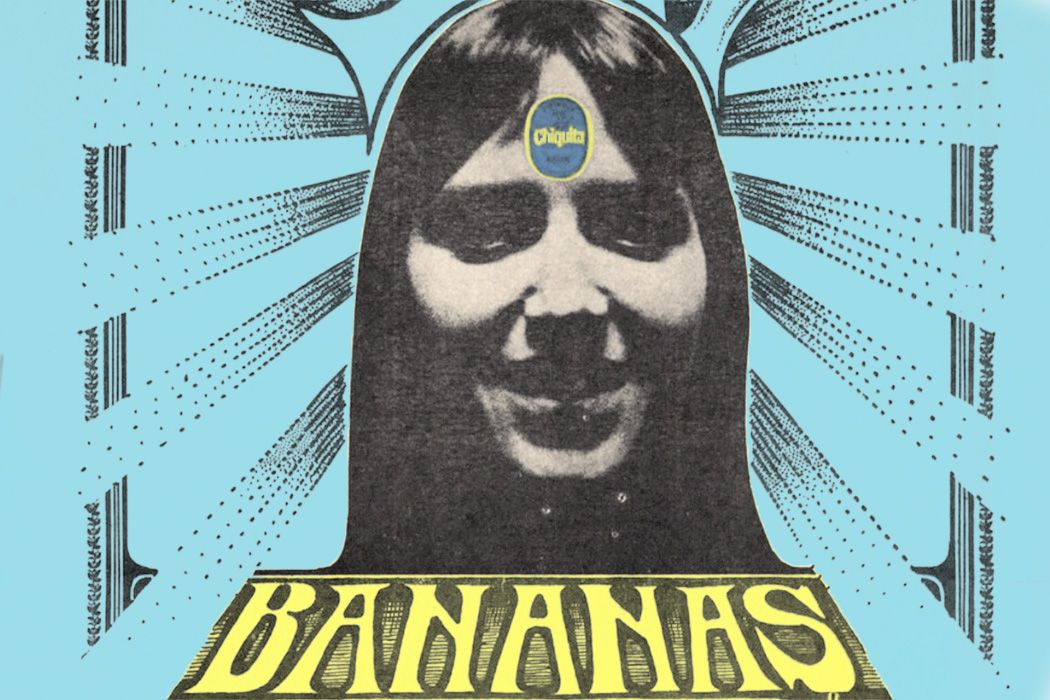
From page 3 of the April 1, 1967 issue of The Sun (Detroit)
By: Jeremy Guida
June 20, 2021
In the 1960s, many authors, publishers, and readers of underground papers understood them as alternatives to what they considered mainstream news sources, or the “aboveground press”: network television news, daily newspapers, national magazines. The dailies covered the war in Vietnam, racism, and youthful unrest, but with certain assumptions, especially that violent protest was never justifiable but the Vietnam War was. (This would change somewhat after 1968.) At the same time, these outlets touted themselves as upholding the time-honored tradition of “objective reporting.”
But much of the success of the underground press stemmed from the fact that alternative papers were written and published from perspectives that many readers didn’t see in mainstream media. Underground authors, because they were often participants in the counterculture, vehemently opposed the idea that mainstream news sources were objective, because the daily papers’ assumptions about the world were so different from their own.
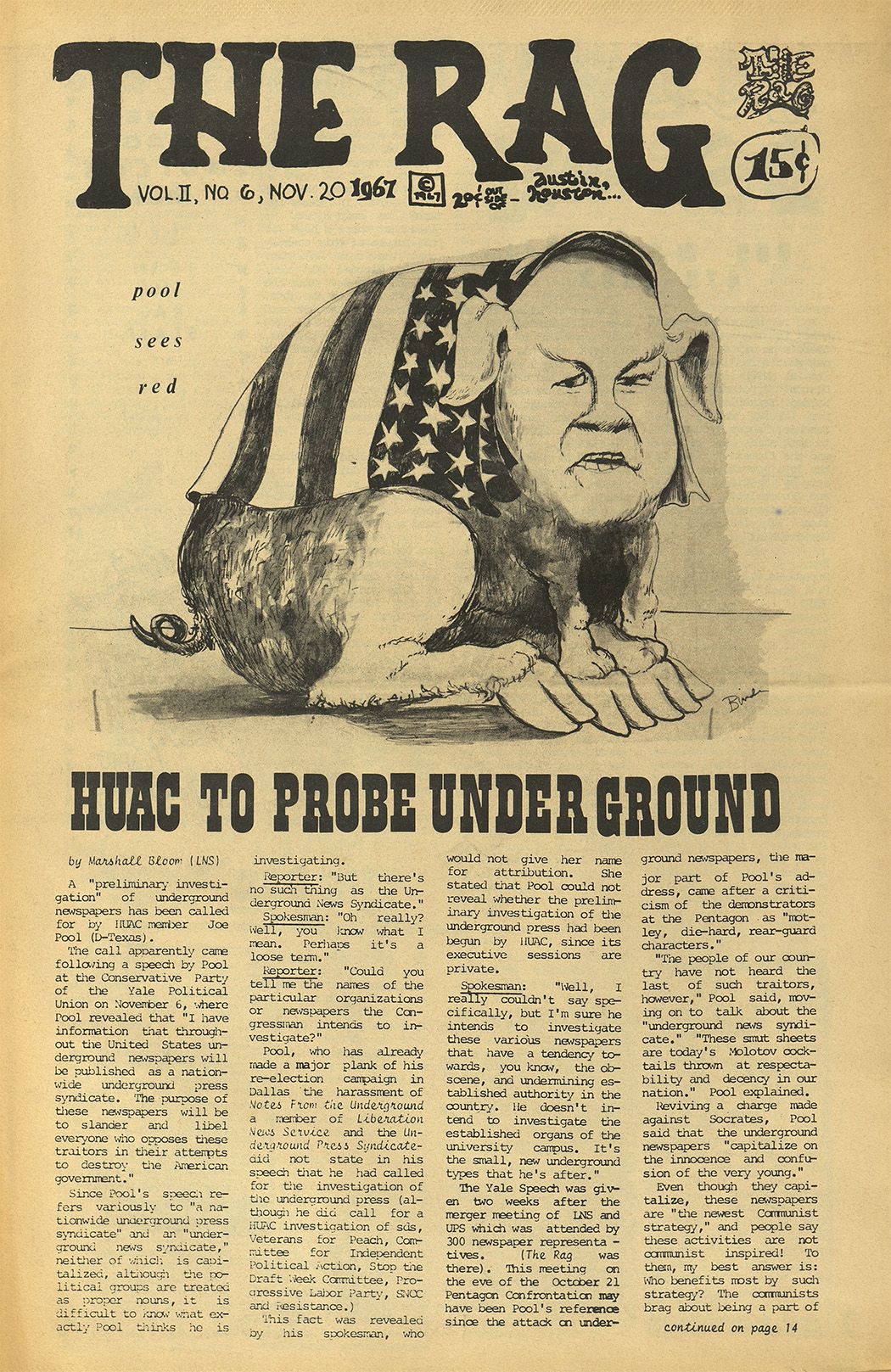 The cover of The Rag, November 20, 1967
The cover of The Rag, November 20, 1967
This might sound familiar. During former President Donald Trump’s campaign and after his election, many people on the political right claimed that news sources like CNN that are generally considered mainstream are in fact “fake news.” Some right-wing media outlets also call themselves alternative.
But underground periodicals of the 1960s fell on the opposite end of the political spectrum. They considered the US military, racial injustice, and any form of conservatism anathema. Because of the ad-hoc ways in which they were published, however, they were prone to printing the occasional rumor.
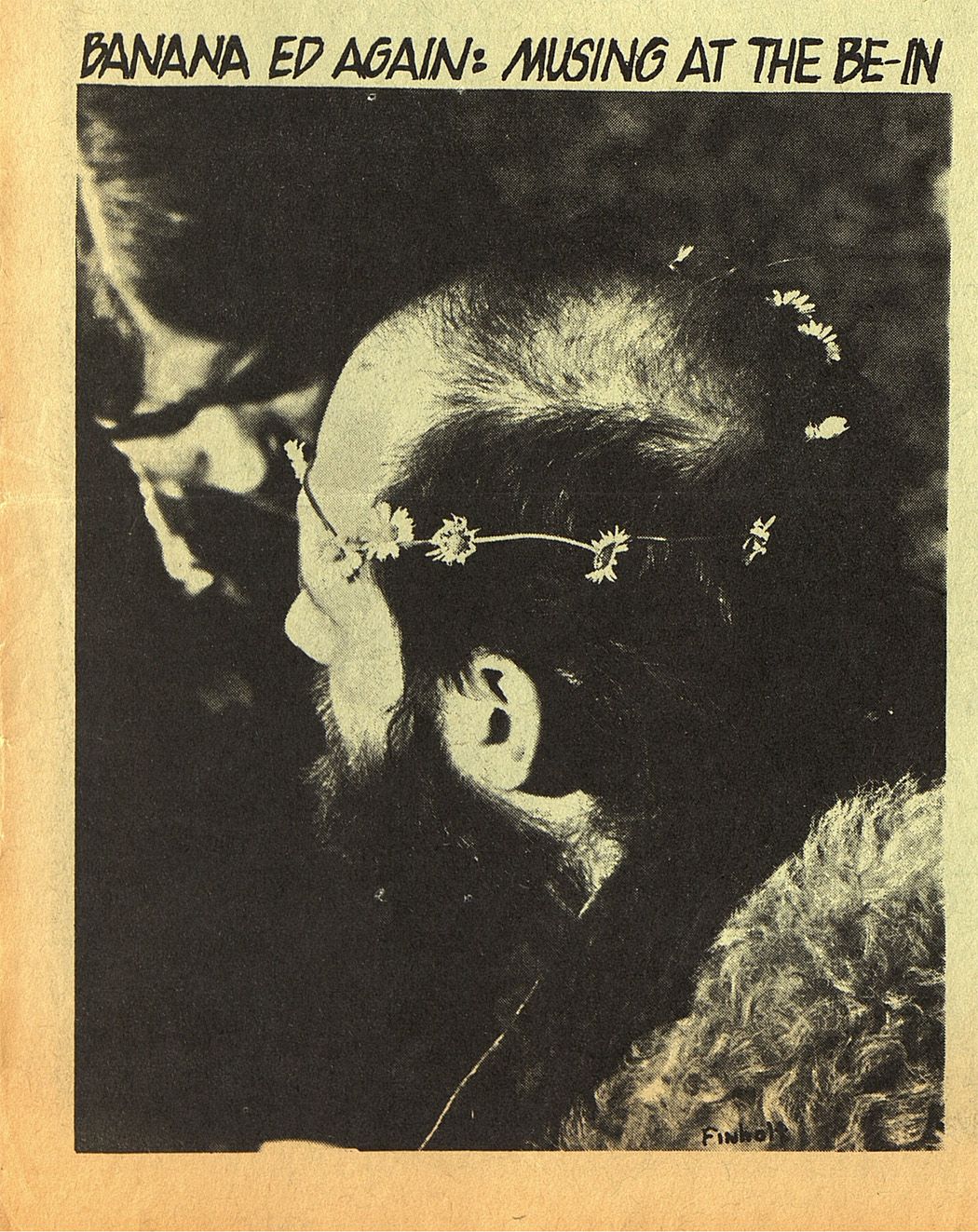 From page 8 of the April 13, 1967 issue of Helix
From page 8 of the April 13, 1967 issue of Helix
One of the most entertaining of these rumors was what historian John McMillan has called “the Great Banana Hoax of 1967.” In the spring of that year, publishers of underground papers printed a recipe for smoking banana peels. It involved freezing the peels, blending them into a pulp, baking the residue at 200 degrees, and then smoking it in a cigarette or pipe (The Berkeley Barb, March 17, 1967). This supposedly produced an experience similar to that of smoking marijuana.
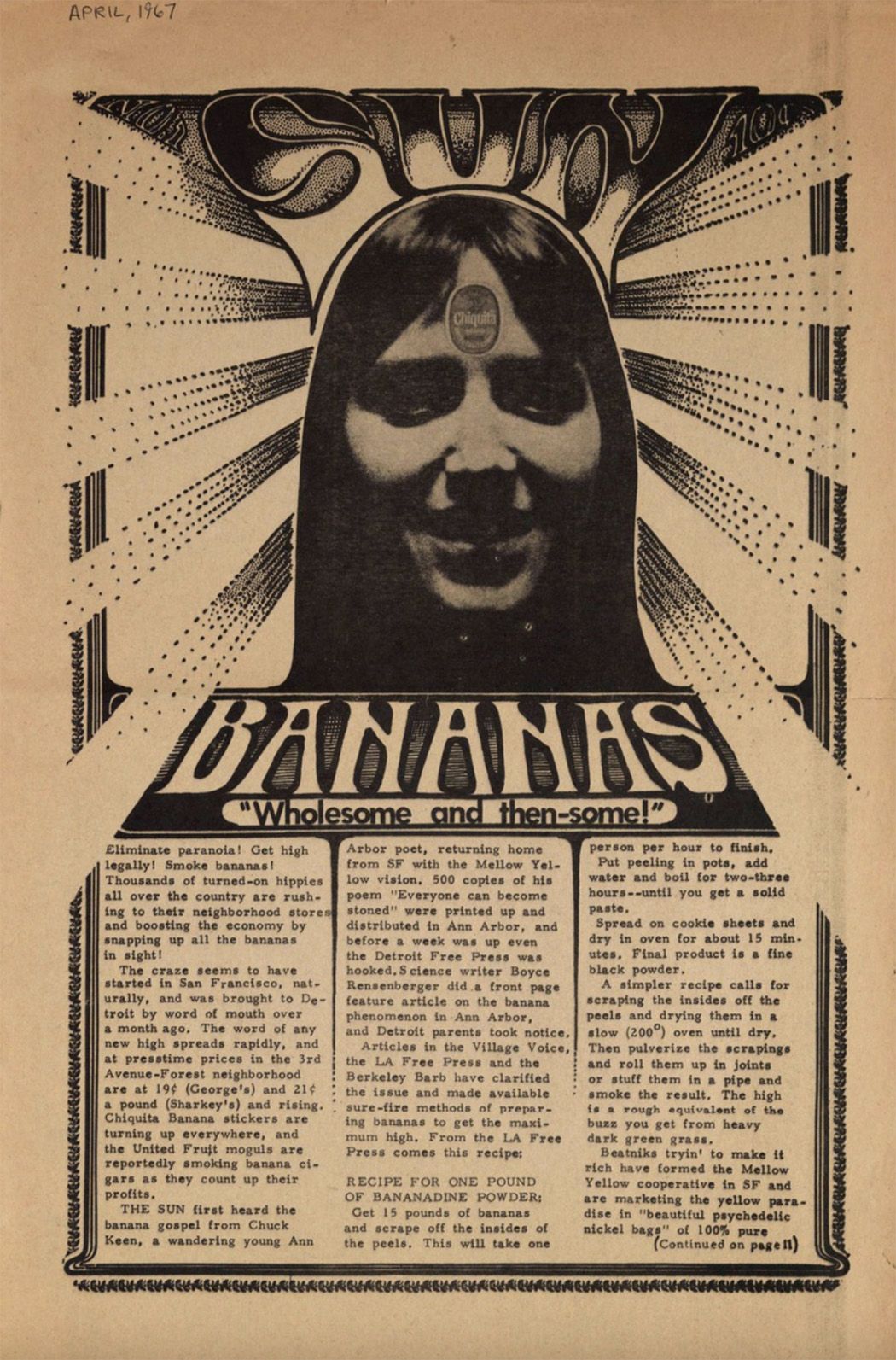 Page 3 of the April 1, 1967 issue of The Sun (Detroit)
Page 3 of the April 1, 1967 issue of The Sun (Detroit)
Despite the lack of any scientifically identifiable psychotropic effects, banana-peel smoking soon became a nationwide phenomenon, with bananas a symbol of the counterculture. The recipe was reprinted in Los Angeles, San Francisco, Berkeley, Seattle, Detroit, Austin, and New York. According to The Sun, from Detroit, “Thousands of turned-on hippies all over the country are rushing to their neighborhood stores and boosting the economy by snapping up all the bananas in sight!… Chiquita Banana stickers are turning up everywhere” (Sun, April 1, 1967). The presumably turned-on young woman pictured in the article does indeed sport a Chiquita Banana sticker on her forehead.
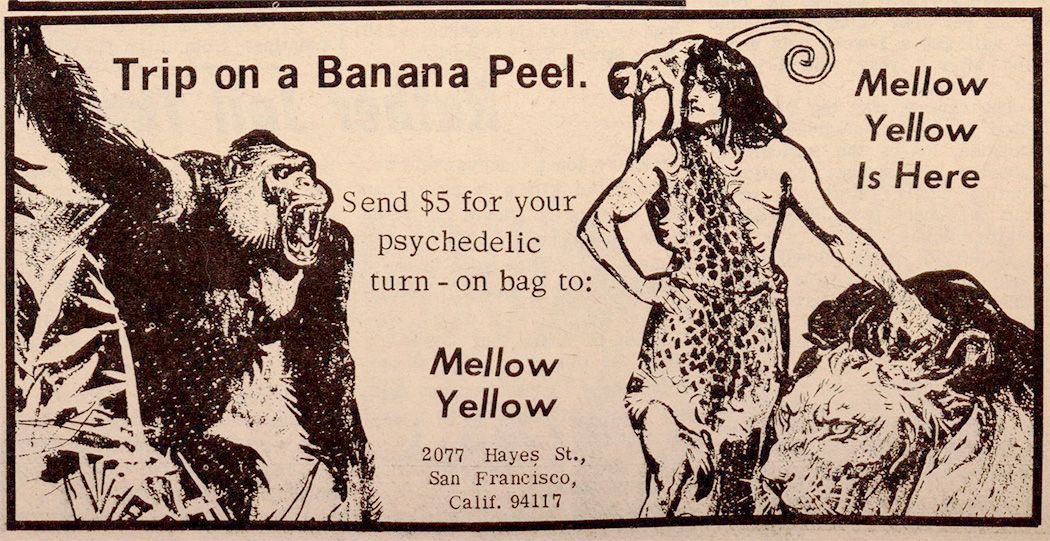 From page 4 of the April 7, 1967 issue of Berkeley Barb
From page 4 of the April 7, 1967 issue of Berkeley Barb
The fad lasted a matter of months, but many participants in the counterculture basked in the quirkiness of the fact that something as innocent and commonplace as a banana could be used to expand consciousness. For as long as people believed that smoking bananas was effective, they printed posters of bananas and incorporated banana smoking into demonstrations. The Berkeley Barb printed a large advertisement that humorously read, “Trip on a Banana Peel” (Berkeley Barb, April 7, 1967). The East Village Other contained multiple ads for countercultural posters promoting consciousness expansion. In June 1967, those ads included images of Ken Kesey’s bus Furthur, morning glories (whose seeds are hallucinogenic), and “Banana Power” (East Village Other, June 1, 1967).
Perhaps the most visible moment of banana smoking occurred at a Human Be-In attended by at least 10,000 people in New York City on Easter Sunday, 1967. According to Students for a Democratic Society’s paper New Left Notes, cameramen were eager to film a “Banana Deity and its parading followers” (New Left Notes, April 13, 1967). The followers reportedly “waved Chiquita emblems, gave the banana pledge (‘one nation, under Banana, with liberty and justice for all…’) and the Banana salute (middle finger up and bent)” (2). The banana was featured a few months later in August at a demonstration for the legalization of marijuana (East Village Other, August 1, 1967).

Smoking Banana Peels to Get High Was Briefly a Thing
But it didn’t work. The rumor, spread by the underground press in 1967, probably led to many disappointed hippies.
From page 3 of the April 1, 1967 issue of The Sun (Detroit)
By: Jeremy Guida
June 20, 2021
In the 1960s, many authors, publishers, and readers of underground papers understood them as alternatives to what they considered mainstream news sources, or the “aboveground press”: network television news, daily newspapers, national magazines. The dailies covered the war in Vietnam, racism, and youthful unrest, but with certain assumptions, especially that violent protest was never justifiable but the Vietnam War was. (This would change somewhat after 1968.) At the same time, these outlets touted themselves as upholding the time-honored tradition of “objective reporting.”
But much of the success of the underground press stemmed from the fact that alternative papers were written and published from perspectives that many readers didn’t see in mainstream media. Underground authors, because they were often participants in the counterculture, vehemently opposed the idea that mainstream news sources were objective, because the daily papers’ assumptions about the world were so different from their own.
 The cover of The Rag, November 20, 1967
The cover of The Rag, November 20, 1967This might sound familiar. During former President Donald Trump’s campaign and after his election, many people on the political right claimed that news sources like CNN that are generally considered mainstream are in fact “fake news.” Some right-wing media outlets also call themselves alternative.
But underground periodicals of the 1960s fell on the opposite end of the political spectrum. They considered the US military, racial injustice, and any form of conservatism anathema. Because of the ad-hoc ways in which they were published, however, they were prone to printing the occasional rumor.
 From page 8 of the April 13, 1967 issue of Helix
From page 8 of the April 13, 1967 issue of HelixOne of the most entertaining of these rumors was what historian John McMillan has called “the Great Banana Hoax of 1967.” In the spring of that year, publishers of underground papers printed a recipe for smoking banana peels. It involved freezing the peels, blending them into a pulp, baking the residue at 200 degrees, and then smoking it in a cigarette or pipe (The Berkeley Barb, March 17, 1967). This supposedly produced an experience similar to that of smoking marijuana.
 Page 3 of the April 1, 1967 issue of The Sun (Detroit)
Page 3 of the April 1, 1967 issue of The Sun (Detroit)Despite the lack of any scientifically identifiable psychotropic effects, banana-peel smoking soon became a nationwide phenomenon, with bananas a symbol of the counterculture. The recipe was reprinted in Los Angeles, San Francisco, Berkeley, Seattle, Detroit, Austin, and New York. According to The Sun, from Detroit, “Thousands of turned-on hippies all over the country are rushing to their neighborhood stores and boosting the economy by snapping up all the bananas in sight!… Chiquita Banana stickers are turning up everywhere” (Sun, April 1, 1967). The presumably turned-on young woman pictured in the article does indeed sport a Chiquita Banana sticker on her forehead.
 From page 4 of the April 7, 1967 issue of Berkeley Barb
From page 4 of the April 7, 1967 issue of Berkeley BarbThe fad lasted a matter of months, but many participants in the counterculture basked in the quirkiness of the fact that something as innocent and commonplace as a banana could be used to expand consciousness. For as long as people believed that smoking bananas was effective, they printed posters of bananas and incorporated banana smoking into demonstrations. The Berkeley Barb printed a large advertisement that humorously read, “Trip on a Banana Peel” (Berkeley Barb, April 7, 1967). The East Village Other contained multiple ads for countercultural posters promoting consciousness expansion. In June 1967, those ads included images of Ken Kesey’s bus Furthur, morning glories (whose seeds are hallucinogenic), and “Banana Power” (East Village Other, June 1, 1967).
Perhaps the most visible moment of banana smoking occurred at a Human Be-In attended by at least 10,000 people in New York City on Easter Sunday, 1967. According to Students for a Democratic Society’s paper New Left Notes, cameramen were eager to film a “Banana Deity and its parading followers” (New Left Notes, April 13, 1967). The followers reportedly “waved Chiquita emblems, gave the banana pledge (‘one nation, under Banana, with liberty and justice for all…’) and the Banana salute (middle finger up and bent)” (2). The banana was featured a few months later in August at a demonstration for the legalization of marijuana (East Village Other, August 1, 1967).
Last edited by a moderator:
Marlon Rando
Well-Known Member
|
Sponsored by |
|---|
|
|
|
